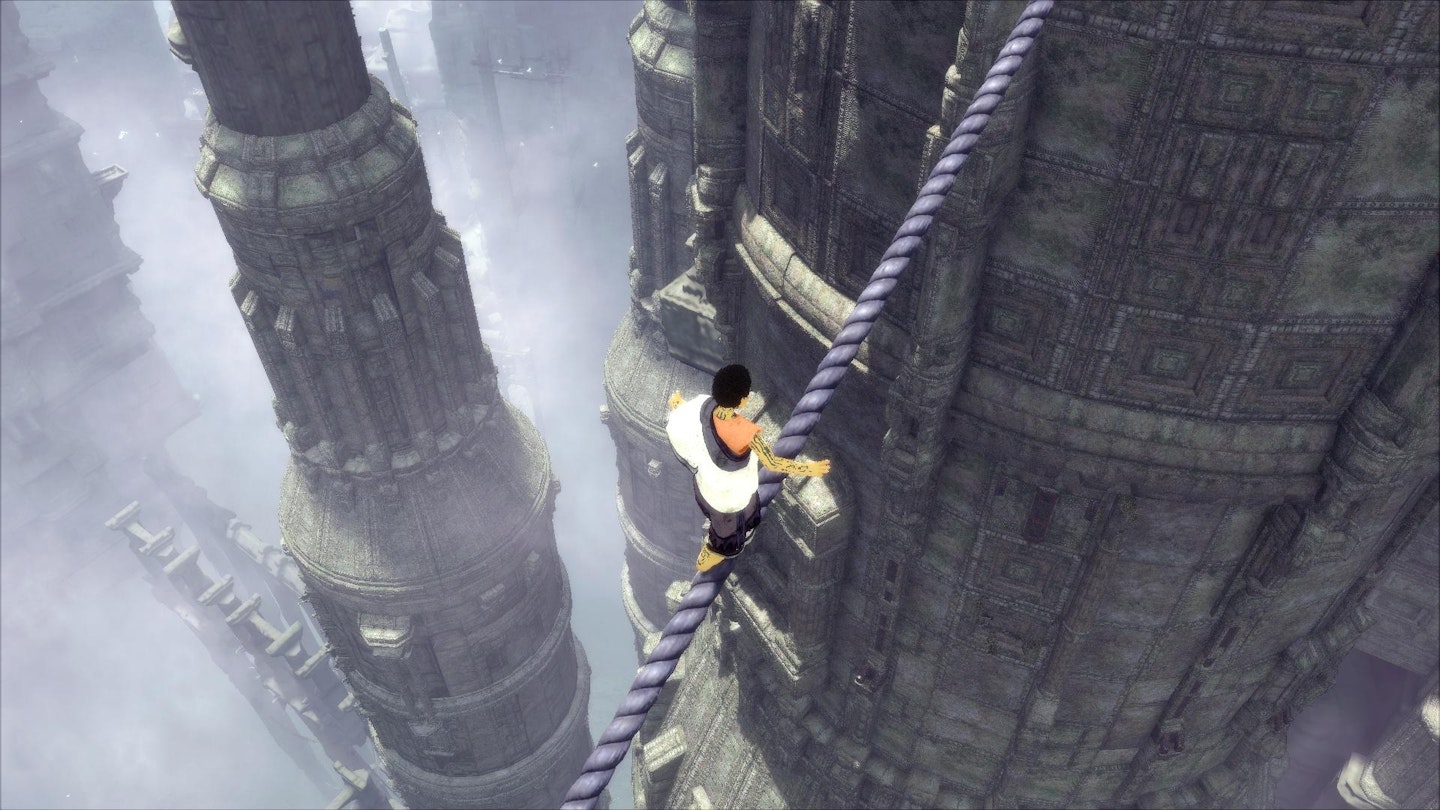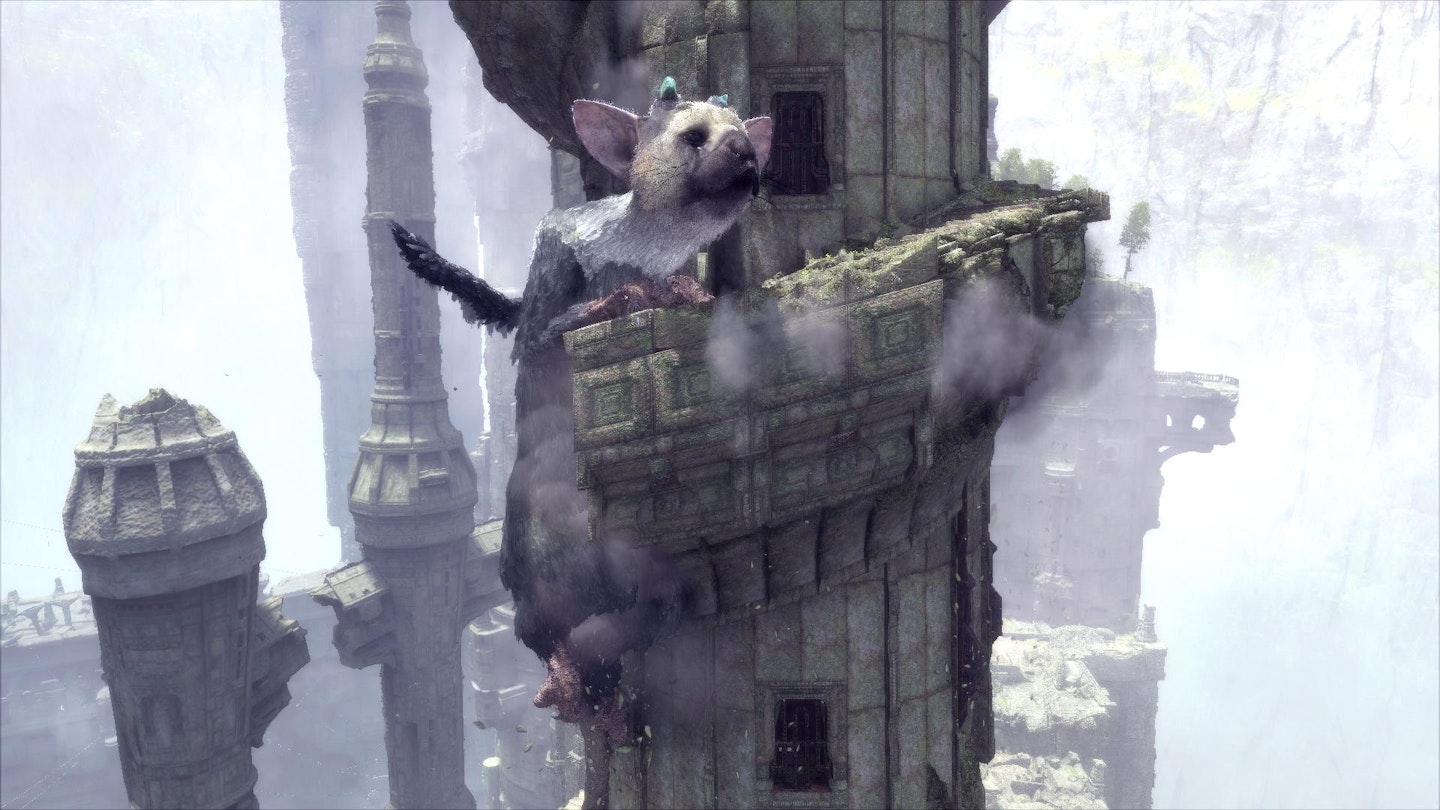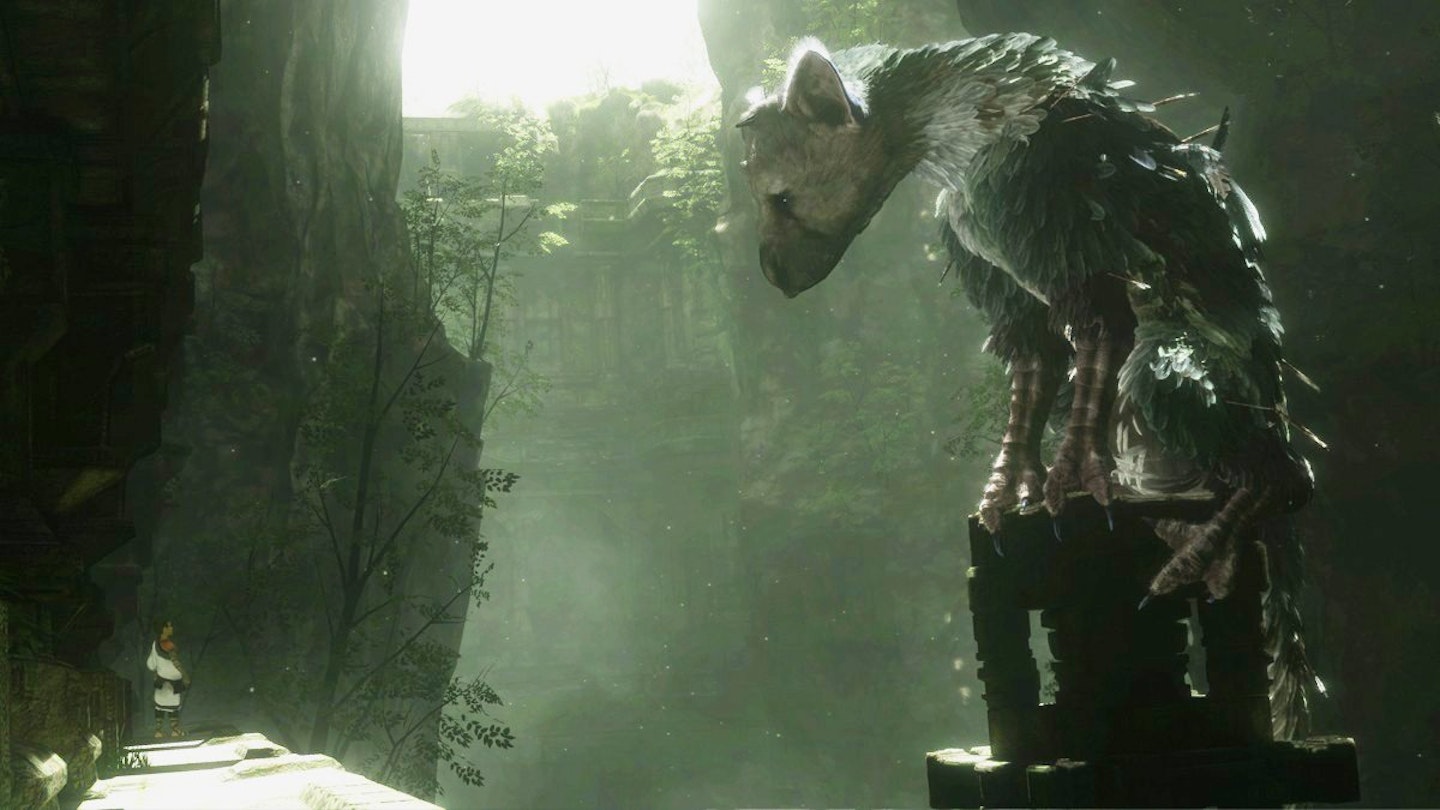Nine years and one change of console platform into its lingering development, the release of The Last Guardian has been burdened with seemingly unmanageable expectations. The third title from the creator of Ico and Shadow Of The Colossus had become almost mythical, a game players feared they might never see at all. You play as a sandal-wearing boy (Ishikawa) who awakens covered in tribal tattoos in an underground dungeon next to a hulking creature — seemingly once a protector of this place — chained and bleeding, on the cobblestones beside him. Together, the pair must bond and collaborate to escape the overgrown city in which they find themselves, with its ghoulish patrolling knights, and towering masonry. To proceed you must lure and coax Trico, as the composite animal is called, using waves of the hand and treats, in this way convincing the AI to batter down gates, leap tall buildings while you cling to his feathers, or provide an impromptu platform to a narrow ledge. It’s this aspect of the development that must have provided the headaches and delays. Companion AI has been the scourge of many a blockbuster. And yet, in the final reckoning, Trico’s behaviour is nothing short of a revelation.

Wonder is found first in Trico’s animation. While he is a fictional beast — part bird, cat, dog and rat — he moves with the elegance and character of a beloved pet (the way he rolls in puddles then shakes the rain drops from his back; the waggle of the ears; the sniffs of the wind; the pained yelp and cringe whenever a foe’s spear finds its way into his flesh). The natural, well-observed animation is not mere dressing: it helps create a close bond between player and animal. While, in the substantial game’s opening minutes there is distrust, fear and even some antagonism, in time the boy and his beast come to rely upon each other not only to progress but also to survive. The first time you make an impossible leap into the air in the hope that Trico will snatch you from certain death is set to become one of modern gaming’s defining moments.

Ueda has a talent, not only for cinematic pacing and drama (aided here by Takeshi Furukawa’s tasteful orchestral soundtrack), but also for wonderfully organic puzzle design. There is little of the typical video-game designer’s contrivance here. Rather, Ueda uses the environment to give cues for puzzles and solutions. You might need to lure Trico into a body of water, in order to raise its level and enable the boy to reach a ladder. Or, at times you will find yourself staring at the architecture, trying to figure out a possible way to climb, Lara Croft-like, to the next place, only for Trico to leap over the entire structure in one bound. The animal’s power to upset the usual rhythms and expectations of video games cannot be understated. He is a revolutionary force let loose in Ueda’s playpen.
An affecting one, too. Through co-operation a deep and caring bond develops between Trico, you and your avatar. The animal, so clearly abused and neglected, must be regularly fed in order to keep his energy levels up, and when startled, he must be calmed with back rubs and cooing words. By the game’s conclusion, the bond is unbreakable. You are his guardian, as much as he is yours. And in that connection, an unforgettable game is made.
